187. Although there
were 63 days from Bharani at the Full Moon
in Cb1-14 to te ua in Cb4-6 (77) and
also 63 days from the Head of the Fly in
Cb1-12 to henua in Cb4-4 (75) a more
relevant measure could have been 73 (=
365 / 5) glyphs from Hamal (at the Full
Moon). 364 - 354 = 10 = 73 - 63.
Below are
many ideas regarding glyph line Cb1 and
at least some of them could be relevant
- intended to be reflected by the text:
 |
 |
 |
 |
|
Cb1-1 (393) |
Cb1-2 |
Cb1-3 |
Cb1-4 (366
+ 30) |
|
E tupu -
ki roto |
o te hau tea |
ki te henua -
te maro |
|
INVISIBLY CLOSE TO THE SUN
(helical dates): |
|
MUPHRID (Solitary Star) = η Bootis
(210.1), ζ Centauri (210.3) |
φ Centauri (211.0), υ¹ Centauri
(211.1), υ² Centauri (211.8), τ
Virginis (211.9) |
AGENA (At the Knee) = β Centauri
(212.1), θ Apodis (212.5),
THUBAN
(Dragon)
= α Draconis
(212.8) |
14h (213.1)
π Hydrae, χ Centauri (213.0),
MENKENT (Shoulder of the
Centaur) = θ Centauri
(213.1) |
 |
|
Oct 17 (290) |
18 |
19 |
20 |
|
ºOct 13 |
14 |
15 (*208) |
16 |
|
'Sept 20 (*183) |
21 |
Equinox |
23 |
|
"Sept 6 |
7 |
8 |
9 (*172) |
|
AUG 14 |
15 |
16 (*144 = 12 * 12) |
17 (225 = 15 * 15) |
|
206 |
207 |
208 |
209 |
|
CLOSE TO THE FULL MOON (and
nakshatra dates): |
|
Al Sharatain-1 /
Ashvini-1 /
Bond-16 (Dog) /
Mahrū-sha-rishu-ku-1
(Front of the Head of Ku)
SEGIN = ε Cassiopeia, MESARTHIM
= γ Arietis,
ψ Phoenicis
(27.2),
SHERATAN
(Pair of Signs)
= β Arietis, φ Phoenicis
(27.4) |
ι
Arietis (28.0), λ Arietis
(28.2), υ Ceti (28.8) |
ALRISHA
(The Knot) = α Piscium,
χ Phoenicis (29.2),
ALAMAK (Caracal) = γ Andromedae
(29.7) |
Arku-sha-rishu-ku-2 (Back of
the Head of Ku)
2h (30.4)
κ
Arietis (30.3),
HAMAL
(Sheep)
= α Arietis
(30.5)
ALKES (α Crateris)
|
 |
|
April 17 (290 - 183) |
18 |
19 (*29) |
4-20 |
|
ºApril 13 (*23) |
4-14 (104) |
15 |
16 |
|
'March 21 (*366) |
22 (*1) |
23 |
JULIAN EQUINOX |
|
"March 7 (66) |
8 |
9 (*354 = *368 - *14) |
10 |
|
FEBR 12 (43) |
13 (*330) |
2-14 (45) |
15 |
|
364 + 25 = 389 |
390 = 207 + 183 |
25 = 45 - 20 |
26 = 30 - 4 |
 |
 |
 |
|
 |
 |
 |
 |
|
Cb1-5 |
Cb1-6 (→ 16) |
Cb1-7 |
Cb1-8 |
Cb1-9 |
Cb1-10 (402) |
Cb1-11 |
|
rutua - te pahu - rutua te maeva |
atua rerorero |
atua hiko ura |
hiko o tea |
ka higa te ao ko te henua ra
ma te hoi atua |
|
INVISIBLY CLOSE TO THE SUN
(helical dates): |
|
Neck-2 (Dragon)
ASELLUS TERTIUS = κ Bootis,
κ
Virginis,
14 BOOTIS
(214.8) |
Al Ghafr-13 (Covering) /
Svāti-15 (Very Good) /
TAHUA-TAATA-METUA-TE-TUPU-MAVAE-6
(a pillar to stand by)
15 Bootis
(215.2),
ARCTURUS
= α Bootis
(215.4),
ASELLUS SECUNDUS = ι Bootis
(215.5),
SYRMA
(Train of the Virgin's Robe) = ι
Virginis,
λ
Bootis (215.6), η Apodis (215.8) |
ι Lupi,
18 Bootis
(216.3),
KHAMBALIA (Crooked-clawed) = λ Virginis
(216.4), υ Virginis (216.5), ψ
Centauri (216.6), ε Apodis
(216.8) |
|
ASELLUS
PRIMUS
(1st Ass Colt) = θ Bootis
(217.8) |
τ Lupi, δ Oct. (218.1), φ
Virginis (218.7)
FOMALHAUT (α Piscis Austrini) |
σ Lupi (219.1), ρ Bootis
(219.5),
HARIS
(Keeper) = γ Bootis
(219.7) |
σ Bootis (220.2), η Centauri
(220.4) |
|
"Al
Hāris
al Samā, the Keeper of
Heaven, perhaps came from the
star's [Arcturus] early
visibility in the twilight owing
to its great northern declination
[19° 27′ N], as though on the
lookout for the safety and
proper deportment of his lesser
stellar companions, and so
'Patriarch Mentor of the Train'.
This subsequently became
Al Hāris al Simāk,
the Keeper
of Simāk, probably referring to
Spica, the Unarmed One ... The
word
Simāk is of disputed
signification, and was a
fruitful subject of discussion a
century ago. It is from a root
meaning 'to raise on high', and
is thought to have been employed
by the Arabs when they wished to
indicate any prominent object
high up in the heavens, but with
special reference to this star
[Arcturus] and to the other
Simāk, Spica of the Virgin."
(Allen)
Probably this explains why Spica
had been 'raised on high' in the
Brazilian flag:
 |
|
Oct 21 |
22 |
(*216 = 3 * 72) |
|
24 |
25 |
26 |
27 (216 + 84) |
|
ºOct 17 |
18 (291) |
19 |
20 |
21 (*214) |
22 |
23 |
|
24 |
'Sept 25
(*188) |
26 |
27 |
28 |
29 (136 * 2) |
(273 = 3 * 91) |
|
10 |
"Sept 11 (*174) |
12 |
(4 * 64 = 16 * 16) |
14 |
15 |
16 |
|
AUG
18 |
19 |
20 (*152) |
21 |
22 |
23 |
24 (236) |
|
210 |
211 = 291 - 80 |
212 |
213 |
214 |
215 |
216 = 236 - 20 |

... Mons Maenalus, at
the feet of Boötes, was
formed by Hevelius, and
published in his
Firmamentum
Sobiescianum; this title
coinciding with those of
neighboring stellar groups
bearing Arcadian names. It
is sometimes, although
incorrectly, given as
Mons Menelaus, -
perhaps, as Smyth suggested,
after the Alexandrian
astronomer referred to by
Ptolemy and Plutarch. The
Germans know it as the
Berg Menalus; and
the Italians as Menalo.
Landseer has a striking
representation of the
Husbandsman, as he styles
Boötes, with sickle and
staff, standing on this
constellation figure. A
possible explanation of its
origin may be found in what
Hewitt writes in his
Essays on the Ruling Races
of Prehistoric Times:
The Sun-god thence climbed
up the mother-mountain of
the Kushika race as the
constellation Hercules, who
is depicted in the old
traditional pictorial
astronomy as climbing
painfully up the hill to
reach the constellation of
the Tortoise, now called
Lyra, and thus attain the
polar star Vega, which was
the polar star from 10000 to
8000 B.C.
May not this modern
companion constellation,
Mons Maenalus, be from a
recollection of this early
Hindu conception of our
Hercules transferred to the
adjacent Bootes?
|
|
CLOSE TO THE FULL MOON (and
nakshatra dates): |
|
η
Arietis (31.9) |
ξ¹ Ceti (32.1) |
θ
Arietis (33.3),
MIRA
= ο Ceti
(33.7) |
|
no star listed (34) |
ξ
Arietis (35.0), ρ Ceti (35.4),
ξ² Ceti (35.9) |
σ
Ceti (36.9) |
ν
Ceti (37.9) |
|
April 21 |
22 (*32) |
23 |
24 |
25 |
26 (116) |
27 |
|
ºApril 17 |
18 (*28) |
19 |
20 |
21 (111) |
22 |
23 |
|
3-25 |
26 (*5 = *32 - 27) |
'March
27 |
28 |
29 (88) |
30 |
'March 31 |
|
3-11 |
(*357
= 366 + 71 - 80) |
"March
13 |
3-14 (73) |
15 |
16 |
"March 17 |
|
2-16 |
17 (112 - 64 = 48) |
FEBR 18 |
19 |
20 |
21 (52) |
22 (403 - 350) |
|
27 |
28 = 32 - 4 |
29 |
30 |
31 |
32 |
33 = 53 - 20 |
 |
 |
 |
 |
 |
|
Cb1-12 (354 + 50) |
Cb1-13 |
Cb1-14 (350 + 8 * 7) |
Cb1-15 (407) |
|
manu rere - kua rere ga manu
- ki te ragi |
eaha te nuku erua |
koia kua huki |
e niu tu |
|
INVISIBLY CLOSE TO THE SUN
(helical dates): |
|
ρ
Lupi (221.0),
TOLIMAN
= α Centauri
(221.2), π Bootis (221.8), ζ
Bootis (221.9) |
31 Bootis (222.0),
YANG MUN
(South Gate) = α Lupi
(222.1),
RIJL AL AWWA (Foot of the
Barker) = μ Virginis
(222.5), ο Bootis (222.9) |
IZAR
(Girdle) = ε Bootis
(223.0),
109 Virginis,
α
Apodis (No Feet)
(223.3), μ Librae (223.8) |
Al Zubānā-14a
/
Visakha-16 (Forked) /
Root-3 (Badger)
ZUBEN ELGENUBI
(Southern Claw)
= α Librae
(224.2), ξ Bootis, ο Lupi
(224.5) |
KOCHAB
(Kakkab,
the Star) = β Ursae Min.
(225.0), ξ Librae (225.7) |
|
Oct 28 (301) |
29 |
30 (366 - 63) |
31 (304 = 80 + *225) |
Nov 1 |
|
ºOct 24 |
25 |
26 |
27 (300) |
28 |
|
'Oct 1 |
2 |
3 |
4 (277) |
5 |
|
17 (260) |
(*222 -
*41) |
"Sept 19 (*182) |
20 |
21 (264) |
|
AUG 25 |
26 (*222 - *64) |
27 (239 = 303 - 64) |
28 (60 + 180) |
29 (241 = 58 + 183) |
|
217 -
218 |
219 |
220 (= 240 - 20) |
221 |
 |
|
CLOSE TO THE FULL MOON (and
nakshatra dates): |
 |
|
ν
Arietis (38.5), δ, ε Ceti (38.8) |
μ
Arietis (39.4),
HEAD OF THE FLY
= 35 Arietis
(39.6),
KAFFALJIDHMA (Part of a Hand) = γ Ceti,
θ Persei (39.8) |
π
Ceti, ο Arietis (40.0),
ANGETENAR
(Bend in the River) = τ¹ Eridani,
μ Ceti (40.2),
RIGHT WING
= 39 Arietis
(40.9) |
Bharani-2 (Yoni) /
Stomach-17 (Pheasant)
π
Arietis (41.2),
MIRAM (Next to the Pleiades) = η
Persei
(41.3),
BHARANI
= 41 Arietis
(41.4),
τ² Eridani, σ Arietis (41.7) |
TA LING (Great Mound)
= τ
Persei (42.4) |
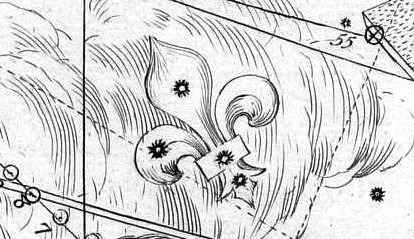
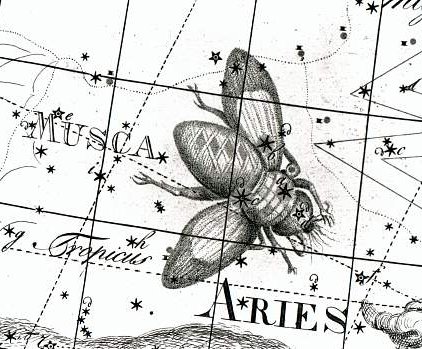 |
|
28 (118) |
(4 * 29½ + 1) |
April
30 |
May 1 (121) |
2 |
|
24 |
25 |
ºApril 26 |
27 |
28 (118) |
|
'April 1 (91) |
2 (7 * 13 + 1) |
3 |
4
(*14 = *41 - *27) |
5 |
|
"March 18 |
19 (*364) |
3-20 (*365) |
0h (*366) |
"March 22 (*1) |
|
FEBR 23 |
BIS-SEXTUM |
25 (56 = 120 - 64) |
26 (*343 = *366 - 23) |
2-27 |
|
34 -
35 |
36 |
37 = 41 - 4 |
38 = 58 - 20 |
|
399 - 400 (= 35 + 365) |
401 |
402 |
403 = 407 - 4 |
|
The sequence of heliacal star
dates in the text seems here to
make a jump ahead with 1 place,
because *366 = 365 + 1 and from
Arcturus, Syrma (*215) to Zuben
Elgenubi (*224) there were not 9
but 8 glyphs. Likewise were
there 9 precessional days from
*32 to *41 (Bharani).
The sky dome was moving said
Metoro where the Full Moon
reached Mira.
Maeva.
T. 1. Move.
Rangi-maeva = Moving Sky
(name of a marae). 2. Greet,
greeting. Henry. |
|
... The leap day
was introduced as part of the
Julian reform. The day following
the Terminalia (February 23) was
doubled, forming the 'bis
sextum - literally 'double
sixth', since February 24 was
'the sixth day before the
Kalends of March' using Roman
inclusive counting (March 1 was
the 'first day'). Although
exceptions exist, the first day
of the bis sextum
(February 24) was usually
regarded as the intercalated or
'bissextile' day since the third
century. February 29 came to be
regarded as the leap day when
the Roman system of numbering
days was replaced by sequential
numbering in the late Middle
Ages ...
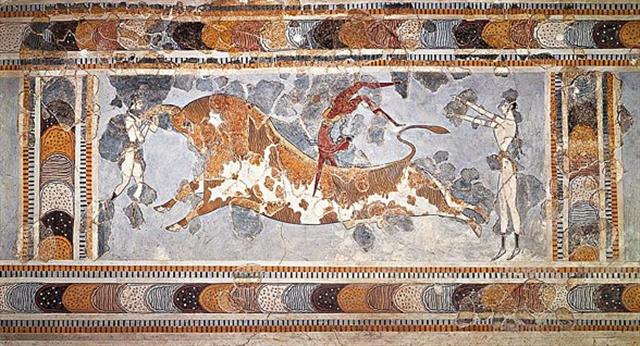 |
 |
 |
 |
 |
 |
 |
|
ki te ariki - e ka hua ra
tona rima |
koia kua iri i ruga o te
rima - e o to
vaha mea |
manu moe
ra |
ki to mata |
e nuku
mata |
hoea |
|
→ 16 |
Cb1-17 |
→ 4 *
29½ |
Cb1-19 |
Cb1-20 (412) |
→ 14 * 29½ |
|
INVISIBLY CLOSE TO THE SUN
NORTH OF THE EQUATOR: |
|
KE KWAN (Cavalry Officer) =
β Lupi
(226.3),
KE KWAN = κ Centauri
(226.4),
ZUBEN
ELAKRIBI
(Claw of the Scropion)
= δ Librae
(226.8), π¹ Oct. (226.9) |
ω Bootis (227.2),
NEKKAR (Herdsman) = β Bootis
(227.3), σ Librae
(227.5), π² Oct.
(227.7),
NADLAT (Mean Little Ones) = ψ Bootis
(227.8), π Lupi (227.9) |
15h (228.3)
ZUBEN HAKRABIM
= ν Librae
(228.3), λ Lupi (228.9) |
ω Oct. (229.3),
ι
Librae
(229.6), κ Lupi (229.7), ζ
Lupi (229.8) |
Al Zubānā-14b
χ Bootis (230.3),
PRINCEPS = δ Bootis
(230.6),
ZUBEN ELSCHEMALI
(Northern Claw)
= β Librae
(230.8) |
μ Lupi, γ Tr. Austr.
(231.3), ο Librae (231.8) |
|
2 (80 + 226) |
3 (*227 → 3.14 |
Nov 4 |
5 (*229) |
6 |
7 |
|
ºOct 29 |
30 |
31 (304) |
ºNov 1 |
2 |
3 (*227 → π) |
|
'Oct 6 |
7 (280 = 307 - 27) |
8 |
9 (*202) |
10 |
11 |
|
"Equinox |
23 (307 - 41) |
"Sept 24 |
25
(*188) |
26 |
27 (270) |
|
AUG 30 (306 - 64) |
31 (60 + 183) |
SEPT 1 (244) |
2 (*165) |
3 |
4 |
|
222 |
223 |
224 |
225 |
226 |
→ 3.14 |
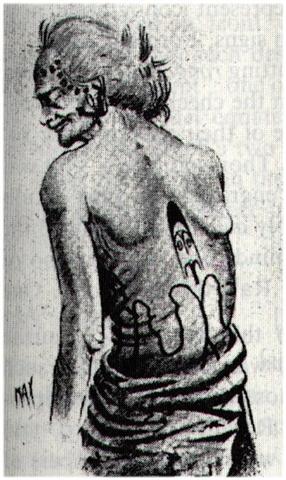 |
|
CLOSE TO THE FULL MOON
ON EASTER ISLAND: |
|
ρ Arietis (43.0),
GORGONEA SECUNDA = π Persei
(43.5),
ACAMAR (End of the Stream) =
θ Eridani
(43.6), ε Arietis (43.7),
λ Ceti (43.9)
|
MENKAR
= α Ceti
(44.7) |
3h (45.7)
GORGONEA TERTIA = ρ Persei
(45.1),
ALGOL
= β Persei
(45.9)
|
ι Persei (46.1),
MISAM (Next to the Pleiades) = κ Persei
(46.2),
GORGONEA QUARTA = ω Persei
(46.7),
BOTEIN
(Pair of Bellies) = δ
Arietis
(46.9) |
ζ Arietis (47.7) |
ZIBAL (Young Ostriches) = ζ
Eridani
(48.0), κ Ceti (48.9) |
|
May 3 (123) |
4 |
5-5 (125) |
6 (*46) |
7 |
8 (128 = 64 + 64) |
|
ºApril 29 |
30 |
ºMay 1 (121) |
2 |
3 |
4 |
|
'April 6 |
7 |
4-8 |
9 |
10 (100) |
11 (*21 = *48 - 27) |
|
"March 23 |
3-24 |
JULIAN
EQUINOX |
(85 = 126 - 41) |
27 |
28 (*7 = *48 - *41) |
|
2-28 (59 = 123 - 64) |
MARCH 1 (60) |
3-2 (61 = 126 - 65) |
3 |
4 |
MARCH 5 (64) |
|
39 |
40 |
41 |
42 |
43 |
44 |
|
The first day in MARCH,
where at the time of
rongorongo the 'nose' (open
jaw, vaha mea) of the
Great Fish (α Ceti) rose
heliacally, came 16 + 1 days
after Sheratan, and at the
time of Bharani this place
was 3-24, the day before the
Julian equinox.
At the time of Bharani the
Demon star Algol was at the
Julian equinox and at the
time of Hyadum II the Mouth
of the Sea Beast (Menkar)
would have arrived in day 60
(MARCH 1). FEBRUARY 28 was
day 31 + 28 = 59
corresponding to May 3 (123)
- 64.
...Then the big Fish did
swallow him, and he had done
acts worthy of blame.
Had it not been that he
(repented and) glorified
Allah, He would certainly
have remained inside the
Fish till the Day of
Resurrection. - Qur'an,
chapter 37 (As-Saaffat),
verse 139–144.
But We cast him forth on the
naked shore in a state of
sickness,
And We caused to grow, over
him, a spreading plant of
the gourd kind.
And We sent him (on a
mission) to a hundred
thousand (men) or more.
And they believed; so We
permitted them to enjoy
(their life) for a while. -
Qur'an, chapter 37
(As-Saaffat), verse 145–148
...
 |
 |
 |
 |
|
ko te rima |
kua oo
ki te vai |
ma te ua |
|
Cb1-22 (414 = 392 + 22) |
Cb1-23 |
Cb1-24 |
|
INVISIBLY CLOSE TO THE
SUN NORTH OF THE
EQUATOR: |
|
ο Cor. Borealis (232.0),
δ Lupi (232.1), φ¹, ν²
Lupi (232.2), ν¹ Lupi
(232.3), ε Lupi (232.4),
φ² Lupi (232.5),
PHERKAD
= γ Ursae Min.
(232.6), ε Librae
(232.7), η Cor. Borealis
(232.8), υ Lupi (232.9) |
ALKALUROPS (The
Herdsman's Lance) = μ
Bootis
(233.1),
ED ASICH (Male Hyena) =
ι Draconis
(233.2) |
NUSAKAN
(Pauper's Bowl) = β Cor.
Bor.
(234.0), κ¹ Apodis
(234.3), ν Bootis
(234.7), ζ Librae
(234.9) |
|
Nov 8 (*232 = *49 + 183) |
9 |
10 (314) |
|
ºNov 4 (308 = 125 + 183) |
5 (*229) |
6 |
|
'Oct 12 (285) |
13 |
14 (*207 = *24 + *183) |
|
"Sept 28 (88 + 183) |
29 (2 * 136) |
30 (273 = 314 - 41) |
|
SEPT 5 (248 = 65 + 183) |
6 |
7 (*170 = *234 - *64) |
|
228 (= 45 + 183) |
229 |
230 (= 314 - 84) |
|
CLOSE TO THE FULL MOON
ON EASTER ISLAND: |
|
τ
Arietis (49.7) |
ALGENIB PERSEI
= α Persei
(50.0), ο Tauri (50.2),
ξ Tauri (50.8)
GIENAH (γ Corvi)
|
σ Persei (51.6) |
|
May 9 (*49 = 414 - 365) |
10 (130) |
11 |
|
ºMay 5 (125 = 308 - 183) |
6 (*46 = *229 - *183) |
7 |
|
'April 12 |
4-13 (→ 14 * 29½) |
14 (104 = 314 - 183 -
27) |
|
"March 29 (88) |
30 |
31 |
|
MARCH 6 |
7 (66 = 130 - 64) |
8 |
|
45 |
46 = 130 - 84 |
47 |
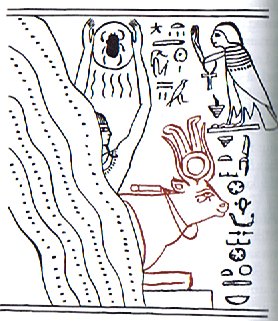
|
18 |
27 |
38 |
38 |
= 121 (= 11 *
11) |
The
number of 'rain
droplets' in the 4
'rivers of time' above
are 121 as in the day
number for ºMay 1 (at
heliacal Algol) or as
the place for the
tattoing instrument (hoea)
in Cb1-21.
Hat-hor (the
House of Horus) emerged
after 11 * 11 dark
nights. But she could
not be observed before
night number 121 + 16 =
137. In ancient Egypt
everything was upside
down and it was a Cow
instead of a Bull. But
Bulls cannot give birth
and Bharani was a place
for birth.
|
ARIES: |
|
1 |
Ashvini |
β and γ
Arietis |
Horse's head |
April 17
(107) |
|
wife of the
Ashvins |
Sheratan and
Mesarthim |
|
2 |
Bharani |
35, 39, and
41 Arietis |
Yoni, the
female organ
of
reproduction |
May 1 (121) |
|
the bearer |
Musca
Borealis |
 |
|
49 |
 |
 |
 |
 |
 |
|
Cb4-3 (466) |
Cb4-4 |
Cb4-5 |
Cb4-6 (77) |
Cb4-7 |
|
te hakaua |
te henua |
te Rei |
te ua |
kiore - henua |
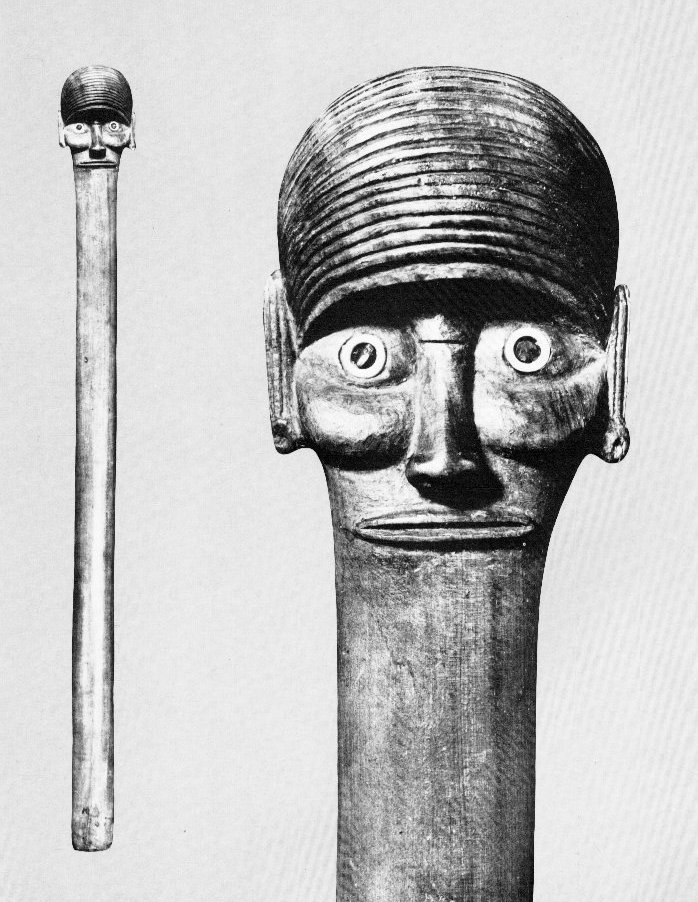
...
The double-headed
ua
is variously described as a
ceremonial staff occasionally
employed as a fighting weapon,
or as a long double-handled club
normally carried as a badge of
rank. Either interpretation is
probably correct. A number of
authentic pieces have been
preserved and many more have
been carved in post-missionary
times primarily, however, from
imported wood.
Whereas the slightly oval neck
section of the staff is almost
circular, its shorter diameter
decreases and its longer
increases towards the lower end,
giving the staff a spatular
shape. Sometimes, however,
according to the suitability of
the wood, the staff has a
uniform cross section all the
way down and the representation
is bilaterally symmetrical. Eyes
are inlaid as on the wooden
images with bone rings enclosing
obsidian disks. Strongly
projecting pouches hang down
below the eyes on each side of a
long, straight and slim nose
with naturalistic alae. The
flat, elliptical mouth is carved
with raised lips surrounding a
horizontal groove. Teeth are not
indicated. Long, narrow ears
with earplugs are carved as
bands along the edges. The
forehead slants forward to
project beyond the eyes.
Eyebrows are lacking, but the
wide and tall forehead is
traversed horizontally by a
dense series of grooves arching
from one side to the other.
There is no chin or beard, as
the narrow lower face continues
uninterruptedly into the staff.
Specimens vary considerably in
length, recent pieces sometimes
approaching 6 ft. (nearly 2 m.),
whereas ancient specimens are
rarely more than some 40 ins.
(ca. 1,20 m.) and sometimes
slightly curved due to the
imperfections of the toromiro
available. Knots or other holes
in the wood are often filled
with perfectly fitted plugs.
Ua were in some instances
preserved in sheaths made from
totora reed
... |
|
INVISIBLY CLOSE TO THE SUN NORTH
OF THE EQUATOR: |
|
South Dipper-8 (Unicorn)
Φ
Sagittarii
(284.0), μ Cor. Austr. (284.6),
η Cor. Austr.,
θ Pavonis
(284.8)
|
SHELIAK
(Tortoise) = β Lyrae,
ν Lyrae (285.1), ο Draconis
(285.5).
λ Pavonis
(285.7)
ATLAS (27 Tauri) |
χ Oct. (286.0),
AIN AL RAMI
(Eye of the Archer) = ν
Sagittarii
(286.2), υ Draconis (286.4), δ
Lyrae (286.3),
κ Pavonis
(286.5),
ALYA = θ Serpentis
(286.6) |
ξ Sagittarii (287.1),
ω Pavonis
(287.3), ε Aquilae, ε Cor.
Austr.,
SULAPHAT
(Little Tortoise Shell) = γ Lyrae
(287.4), λ Lyrae (287.7),
ASCELLA = ζ Sagittarii,
BERED = i Aquilae (Ant.)
(287.9) |
Al Na'ām-18 (Ostriches) /
Uttara Ashadha-21
NUNKI
= σ Sagittarii
(288.4), ζ Cor. Austr. (288.5),
MANUBRIUM = ο Sagittarii
(288.8), ζ Aquilae (288.9) |
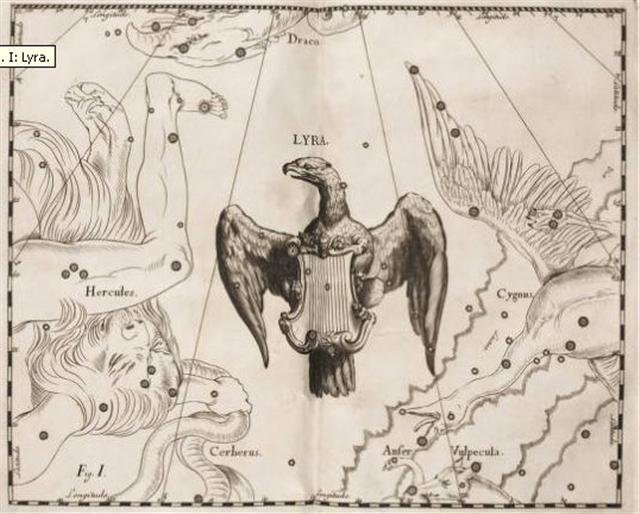
"Aratos called it [the Lyra
constellation] Χέλυς
όλίγη, the Little Tortoise
or Shell, thus going back to the
legendary origin of the
instrument from the empty
covering of the creature cast
upon the shore with the dried
tendons stretched across it.
Lowell thus described its
discovery and use by Hermes:
So there it lay through wet and
dry, As empty as the last new
sonnet, // Till by and by came
Mercury, And, having mused upon
it, // 'Why, here,' cried he,
'the thing of things, In shape,
material, and dimension! // Give
it but strings and, lo!, it
sings - A wonderful invention.'
The equivalent
Latin word Chelys does
not seem to have been often
applied to the constelation, but
the occasional adjectival titles
Lutaria, Mud-in-habiting,
and Marina were, and are,
appropriate ..." (Allen).
...
Lobster said to Flounder: 'Let
us-two hide from each other, see
who is best at that.' Flounder
agreed to play this game.
Lobster went to a hole in the
coral, hid his body; but his
feelers stuck out, he could not
hide them. Flounder knew where
he was, found him.
Said Flounder; 'Now it is my
turn.' He stirred up a cloud of
mud and scooted into it. Then he
returned to Lobster's side, so
quietly that Lobster did not
know he was there. 'Here I am
sir, Lobster!' Lobster was so
angry at being beaten that he
stamped on the fish and smashed
him flat. Cried Flounder; 'Now
I've got one eye in the mud!'
Therefore Lobster gouged it out
for him and roughly stuck it
back on top. This is the reason
why men tread on the Flounder,
but can always see the Lobster's
feelers outside his hole ... |
|
SAGITTARIUS: |
|
21 |
Uttara Ashadha
|
ζ and σ Sagittarii |
Elephant tusk, small bed |
Jan 3 (368) |
|
second
of the ashādhā |
NUNKI |
... This [σ]
has been identified with
Nunki of the Euphratean
Tablet of the Thirty Stars,
the Star of the Proclamation of
the Sea, this Sea being
the quarter occupied by
Aquarius, Capricornus,
Delphinus, Pisces, and Pisces
Australis. It is the same space
in the sky that Aratos
designated as Water ... |
|
30 (314 + 50 - 80) |
Dec 31 |
Jan 1 |
2 |
3 (*288) |
|
ºDec 26 |
27 |
28 |
29 |
30 (364) |
|
'Dec 3 (337) |
4 |
5 |
6 (*260) |
7 |
|
"Nov 19 |
20 (324) |
21 (*245) |
22 |
23 |
|
OCT 27 (250 + 50) |
28 |
29 |
30 |
31 |
|
280 |
281 |
282 |
283 |
284 |
|
CLOSE TO THE FULL MOON
ON EASTER ISLAND: |
|
SIRIUS
= α Canis Majoris
(101.2), ψ5 Aurigae (101.4), ν
Gemini (101.6), ψ6 Aurigae
(101.7)
|
τ
Puppis (102.2), ψ7
Aurigae (102.4) |
Mash-mashu-sha-Risū-9 (Twins
of the Shepherd)
ψ8
Aurigae (103.2),
ALHENA
= γ Gemini
(103.8), ψ9 Aurigae (103.9) |
ADARA (Virgins) = ε Canis Majoris
(104.8) |
ω Gemini
(105.4),
ALZIRR (The Button) = ξ Gemini
(105.7),
MULIPHEIN (Oaths) = γ Canis Majoris
(105.8),
MEKBUDA (Outstretched) = ζ Gemini
(105.9) |
|
(*101 = *51 + *50) |
July 1 |
2 |
3 |
4
(185) |
|
ºJune 26 |
27 |
28 |
29 |
SIRIUS |
|
'June 3 (154) |
4 |
5 |
6 (*77) |
7 |
|
"May 20 (*60) |
21 |
22 |
23 |
24 (12 * 12) |
|
APRIL 27 |
28 (118 = 472 / 4) |
29 |
30 |
MAY 1 (*41) |
|
97 |
98 |
99 |
100 |
101 |
|
462 = 407 + 59 |
463 |
464 |
465 |
466 = 407 + 63 |
 |
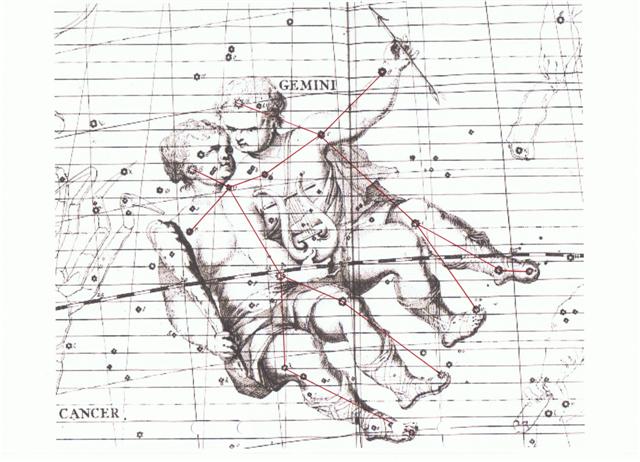
|

































